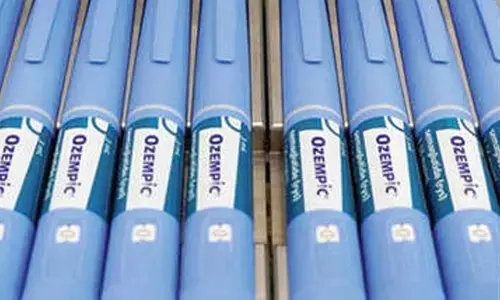Eco-Friendly Parking Solutions: How Automation Supports Sustainable Urban Development

Mr Mukund Shah CEO - Affordable Robotic & Automation Ltd. (ARAPL)
Mr Mukund Shah, the CEO of Affordable Robotic & Automation Ltd. (ARAPL), says implementing eco-friendly parking solutions can help cities address several sustainability issues.
Growing Urbanization and Parking Challenges
Urbanization is an ongoing global phenomenon, with more people flocking to metropolitan areas for better opportunities and amenities. As urban populations swell, so do the challenges associated with city living. One of the most pressing concerns in metro cities is parking, which has become a significant hurdle in ensuring efficient mobility and sustainable urban development.
1. The Urbanization Boom and Its Consequences:The rapid growth of urban areas is fueled by factors like industrialization, economic opportunities, and better access to services. The influx of people and rising affluence have led to a surge in vehicle ownership, intensifying the demand for parking spaces. As a result, metropolitan cities find themselves grappling with several parking-related challenges.
2. Insufficient Parking Infrastructure:With urbanization outpacing the development of parking infrastructure, many metro cities suffer from a severe shortage of parking spaces. This shortage leads to haphazard parking, illegal encroachments, and traffic congestion, exacerbating the problem and impacting the overall cityscape.
3. Land Use Competition and Limited Space:The scarcity of available land in metro cities means that allocating vast areas exclusively for parking is not always feasible. Balancing the need for parking spaces with other urban requirements like housing, commercial establishments, and recreational areas becomes a complex urban planning challenge.
4. Traffic Congestion and Parking Inefficiencies:Inadequate parking facilities force drivers to spend considerable time searching for a suitable parking spot. This continuous circling results in traffic congestion, wasted fuel, increased greenhouse gas emissions, and reduced air quality, adversely affecting the environment and urban dwellers' well-being.
5. Environmental Impact:Parking challenges in metro cities contribute to environmental degradation in multiple ways. The construction of conventional parking lots may involve the removal of green spaces, leading to a loss of biodiversity and reduced natural habitats. Moreover, the increased emissions from idling vehicles and traffic congestion contribute to air pollution and climate change.
6.Sustainable Solutions for Urban Parking Challenges: a. Eco-Friendly Parking Infrastructure and Design: ARAPL is introducing eco-friendly parking structures with features like green roofs, rainwater harvesting, and solar panels that can minimize the environmental impact while maximizing space utilization.
b. Integration of Technology and Automation: ARAPL is embracing smart parking systems, and automation can enhance parking efficiency, directing drivers to available spaces, reducing search times, and easing traffic congestion.
Role of Automation in Supporting Sustainable Urban Development
Automation plays a vital role in supporting sustainable urban development by enabling more efficient, eco-friendly, and resource-conscious practices. As cities face increasing challenges due to urbanization, climate change, and population growth, automation offers innovative solutions that can contribute to a more sustainable and resilient urban environment. Here are several ways automation supports sustainable urban development:
In conclusion, automation plays a transformative role in promoting sustainable urban development. By optimizing resource use, improving transportation, enhancing waste management, and supporting eco-friendly practices, automation helps create cities that are environmentally responsible, efficient, and resilient in the face of future challenges. Embracing automation as part of a comprehensive sustainable development strategy can lead to a more livable and environmentally conscious urban future.
1. Efficient Resource Management: Automation allows for precise monitoring and control of resource consumption in various urban systems. For example, smart grids can optimize energy distribution, reducing waste and ensuring a more reliable and sustainable energy supply for the city.
2. Energy Efficiency: Automated systems can manage energy use in buildings, street lighting, and public infrastructure based on real-time data and occupancy patterns. This leads to reduced energy consumption and lower greenhouse gas emissions, contributing to overall energy efficiency in urban areas.
3. Intelligent Transportation Systems: Automated transportation technologies, such as smart traffic signals and autonomous vehicles, optimize traffic flow, reduce congestion, and minimize fuel consumption. This enhances mobility, reduces emissions, and makes urban transportation more sustainable.
4. Waste Management and Recycling: Automation in waste collection and sorting processes improves efficiency, reduces landfill waste, and promotes recycling and composting. Smart waste bins with sensors can optimize collection routes, reducing emissions from waste management vehicles.
5. Water Conservation: Automation aids in water management through smart irrigation systems, leak detection, and water quality monitoring. These technologies help cities conserve water resources and ensure sustainable water usage for urban residents and industries.
6. Improved Urban Planning: Automated data collection and analysis enable better urban planning decisions. This includes optimizing land use, identifying areas for green spaces, and creating pedestrian-friendly zones, all of which contribute to a more sustainable and enjoyable urban environment.
7. Climate Change Mitigation: Automation facilitates the implementation of climate change mitigation strategies, such as rooftop solar panel installations, energy-efficient buildings, and carbon monitoring systems. These measures contribute to reducing the city's carbon footprint.
8. Disaster Preparedness and Resilience: Automated early warning systems and disaster response mechanisms enhance the city's resilience to natural disasters and other emergencies, safeguarding lives and minimizing damage to infrastructure.
9. Enhanced Public Services: Automation in public services, such as smart lighting and waste management, improves the quality of life for urban residents while reducing environmental impacts and operational costs for the city.
10. Promoting Sustainable Lifestyles: Automation can encourage sustainable behaviours among residents, such as through smart home systems that optimize energy use or automated incentives for using public transportation and shared mobility options.
In conclusion, automation plays a transformative role in promoting sustainable urban development. By optimizing resource use, improving transportation, enhancing waste management, and supporting eco-friendly practices, automation helps create cities that are environmentally responsible, efficient, and resilient in the face of future challenges. Embracing automation as part of a comprehensive sustainable development strategy can lead to a more livable and environmentally conscious urban future.




















